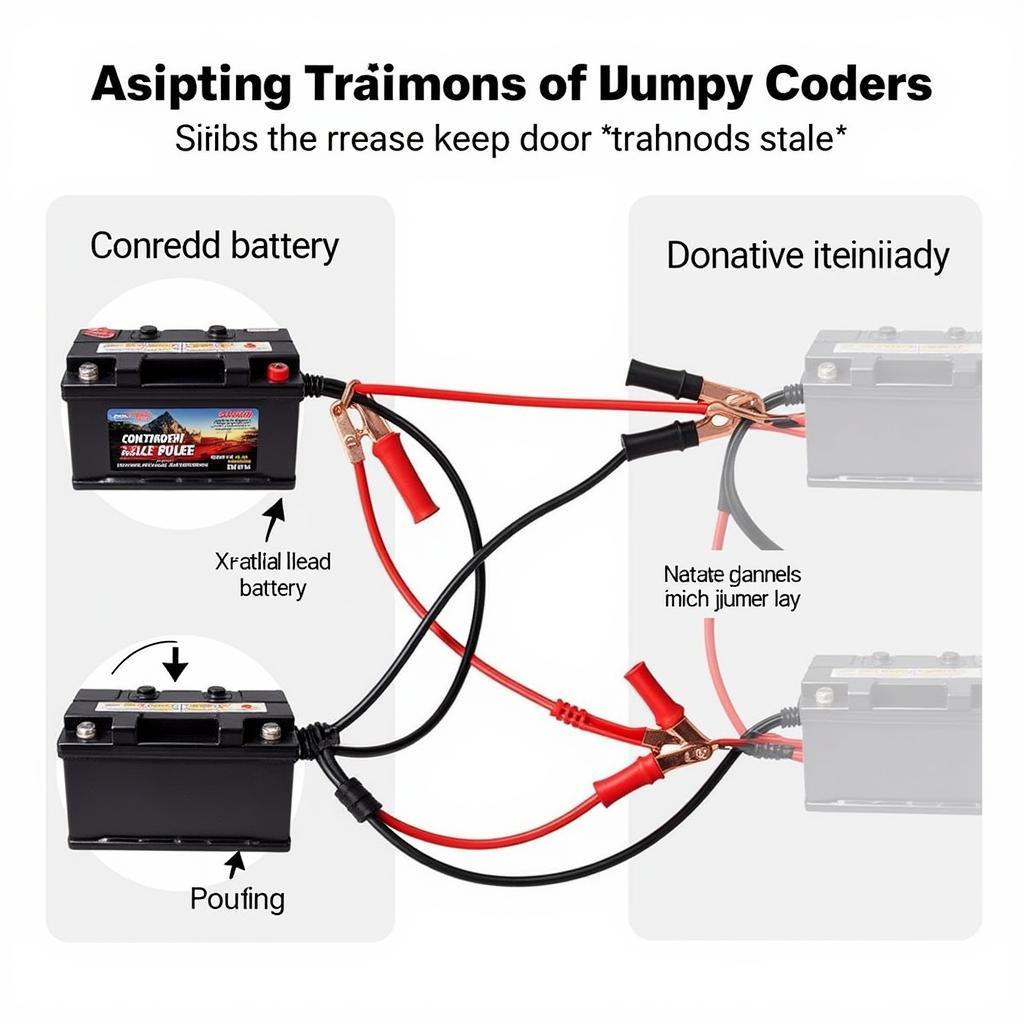A dead car battery can be a frustrating experience, leaving you stranded and needing a quick fix. Safely jumping your dead battery is essential to avoid damage to your vehicle and potential injury. This guide will walk you through the process, ensuring you’re back on the road in no time.
Understanding the Basics of Jump Starting
Before you begin, understanding why and how jump-starting works is important. A dead battery can’t supply the necessary power to start your car’s engine. Jump-starting involves using a charged battery from another vehicle to provide this power, allowing your dead battery to receive a boost. This process essentially allows your starter motor to turn over the engine and gets the car running.
Identifying a Dead Battery
Several signs indicate a dead battery, including dim headlights, a clicking sound when turning the key, slow engine cranking, and electrical malfunctions. If you’ve been left with a lifeless vehicle and suspect a dead battery, a jump start might be your solution.
Gathering the Necessary Equipment for Safely Jumping a Dead Battery
You’ll need jumper cables and a donor vehicle or a portable jump starter. Jumper cables should be heavy-gauge and properly insulated. A portable jump starter offers a convenient alternative if another vehicle isn’t available.
 Safely Connecting Jumper Cables to a Car Battery
Safely Connecting Jumper Cables to a Car Battery
The Step-by-Step Guide to Safely Jumping a Dead Battery
- Park the vehicles: Position the donor vehicle close to yours, ensuring the batteries are accessible but the vehicles aren’t touching.
- Turn off both vehicles: Make sure the ignitions are off in both cars.
- Attach the red (positive) cable: Connect one end of the red cable to the positive (+) terminal of the dead battery. Then, connect the other end to the positive (+) terminal of the donor battery.
- Attach the black (negative) cable: Connect one end of the black cable to the negative (-) terminal of the donor battery. Connect the other end to an unpainted metal surface on the vehicle with the dead battery, away from the battery itself. This grounding step is crucial for safety.
- Start the donor vehicle: Let the donor vehicle run for a few minutes to charge the dead battery slightly.
- Start the vehicle with the dead battery: Try starting your vehicle. If it doesn’t start immediately, wait a few more minutes and try again.
Important Safety Precautions
- Always wear safety glasses and gloves when working with car batteries.
- Never touch the red and black cable clamps together.
- Be mindful of moving parts and hot surfaces in the engine compartment.
“A common mistake people make is connecting the cables in the wrong order. This can cause sparks and potentially damage both batteries. Always double-check your connections before starting either vehicle,” advises John Smith, Automotive Electrical Engineer at Advanced Auto Solutions.
After the Jump Start: What to Do Next
Once your car starts, let it run for at least 15-20 minutes to recharge the battery. If the car won’t start again after turning it off shortly after jump starting, have the battery tested and potentially replaced.
Conclusion
Safely jumping a dead battery is a straightforward process when done correctly. By following these steps and precautions, you can avoid potentially dangerous situations and get back on the road quickly and safely. Remember to have your battery checked after a jump start to ensure it’s in good working condition and prevent future issues.
“Regular battery maintenance is key to avoiding jump starts altogether. Have your battery tested regularly, especially during extreme temperatures,” suggests Maria Garcia, Lead Technician at AutoCare Experts.
FAQ
- How long do jumper cables need to be? Longer cables (12-20 feet) are recommended to provide flexibility in positioning the vehicles.
- Can I jump start a car with a completely dead battery? In some cases, a completely dead battery might not be able to accept a charge, requiring replacement.
- Is it safe to jump start a car in the rain? While possible, extra caution is needed. Ensure the cables and connections are dry and avoid standing in puddles.
- What should I do if the car still won’t start after a jump start? The problem might lie beyond the battery. Seek professional assistance.
- How often should I have my car battery tested? It’s recommended to have your battery tested every six months or with the changing of seasons.
- What causes a car battery to die? Several factors, including age, extreme temperatures, parasitic drain, and faulty charging systems, can cause a dead battery.
- Can I use any type of jumper cables? Always use heavy-gauge, properly insulated jumper cables specifically designed for jump-starting vehicles.

